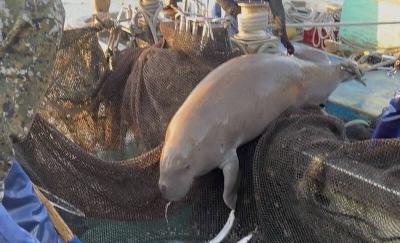The second satellite constellation jointly developed by Taiwan and the US — Formosat-7/COSMIC-2 — is ready to be transported to the US for its launch, National Space Organization (NSPO) Director-General Lin Chun-liang (林俊良) said yesterday.
Once the US gives the green light, the NSPO would start the process to transport the constellation of six weather satellites, Lin said.
Formosat-7 would be launched by US firm Space X from Kennedy Space Center in Florida on the company’s newest rocket, the Falcon Heavy.
It is third in line in the company’s rocket launch schedule this year, according to the NSPO.
The timetable for Formosat-7’s transportation and launch remains uncertain, but based on contractual terms, the US would give the green light to transport the satellite 60 days ahead of its scheduled launch, Lin said.
US personnel late last month visited Taiwan to verify the constellation’s technical details for the final time, he said.
Preparations are under way for the Falcon Heavy’s first commercial launch, scheduled for sometime next month at the earliest, and the results of that launch would affect the timing of subsequent launches, the agency said.
The constellation is to replace Formosat-3, the product of the first space collaboration between Taiwan and the US, with state-of-the-art instruments and equipment to collect meteorological and climate data, it said.
Jointly developed by the NSPO and the US National Oceanic and Atmospheric Administration, the new satellite constellation would be deployed in a low inclination orbit to collect low and mid-latitude ionospheric data.
Each satellite is equipped with three US-built payloads, including a radio occultation receiver that can receive US Global Positioning System and Russian Global Navigation Satellite System signals, the NSPO said.
The data would be transmitted to a ground station and processed into atmospheric and ionospheric weather indicators, such as temperature, pressure, water vapor content and electron density, it said.
The other two payloads are an ion velocity meter, which directly measures the temperature, velocity and incidence angle of ions in the path of each Formosat-7 satellite, and a radio frequency beacon, which measures irregularities in electron densities in the ionosphere.
Formosat-7 would generate double the volume of data generated by Formosat-3 and greatly increase the amount of low-latitude atmospheric and ionospheric data, the agency has said.
The data would be incorporated into the Central Weather Bureau data and forecast system to help improve the accuracy of weather forecasts and climate observation, it said.
In addition to the six satellites, the constellation also includes the Taiwan-built Formosat-7R satellite, dubbed the “wind hunter” by the NSPO.

‘DENIAL DEFENSE’: The US would increase its military presence with uncrewed ships, and submarines, while boosting defense in the Indo-Pacific, a Pete Hegseth memo said The US is reorienting its military strategy to focus primarily on deterring a potential Chinese invasion of Taiwan, a memo signed by US Secretary of Defense Pete Hegseth showed. The memo also called on Taiwan to increase its defense spending. The document, known as the “Interim National Defense Strategic Guidance,” was distributed this month and detailed the national defense plans of US President Donald Trump’s administration, an article in the Washington Post said on Saturday. It outlines how the US can prepare for a potential war with China and defend itself from threats in the “near abroad,” including Greenland and the Panama

A wild live dugong was found in Taiwan for the first time in 88 years, after it was accidentally caught by a fisher’s net on Tuesday in Yilan County’s Fenniaolin (粉鳥林). This is the first sighting of the species in Taiwan since 1937, having already been considered “extinct” in the country and considered as “vulnerable” by the International Union for Conservation of Nature. A fisher surnamed Chen (陳) went to Fenniaolin to collect the fish in his netting, but instead caught a 3m long, 500kg dugong. The fisher released the animal back into the wild, not realizing it was an endangered species at

The High Prosecutors’ Office yesterday withdrew an appeal against the acquittal of a former bank manager 22 years after his death, marking Taiwan’s first instance of prosecutors rendering posthumous justice to a wrongfully convicted defendant. Chu Ching-en (諸慶恩) — formerly a manager at the Taipei branch of BNP Paribas — was in 1999 accused by Weng Mao-chung (翁茂鍾), then-president of Chia Her Industrial Co, of forging a request for a fixed deposit of US$10 million by I-Hwa Industrial Co, a subsidiary of Chia Her, which was used as collateral. Chu was ruled not guilty in the first trial, but was found guilty

DEADLOCK: As the commission is unable to forum a quorum to review license renewal applications, the channel operators are not at fault and can air past their license date The National Communications Commission (NCC) yesterday said that the Public Television Service (PTS) and 36 other television and radio broadcasters could continue airing, despite the commission’s inability to meet a quorum to review their license renewal applications. The licenses of PTS and the other channels are set to expire between this month and June. The National Communications Commission Organization Act (國家通訊傳播委員會組織法) stipulates that the commission must meet the mandated quorum of four to hold a valid meeting. The seven-member commission currently has only three commissioners. “We have informed the channel operators of the progress we have made in reviewing their license renewal applications, and